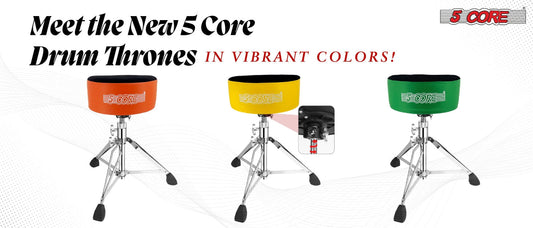What People Ask About Microphone Stand
If you're a musician, podcaster, or someone who loves to record audio, you've probably wondered about the importance of a microphone stand. Microphone stands may seem like a simple accessory, but may seem like a simple accessory, but they play a crucial role in ensuring the quality of your recordings. In this blog, we will address the questions you might have about microphone stands and provide you with a comprehensive guide and answer Microphone or Mic Stand.
How tall should my mic stand be?
The height of your microphone stand largely depends on your needs and preferences. However, a general guideline is to have the microphone at mouth level when you're speaking or singing. For most people, a standard microphone stand with an adjustable height ranging from 36 to 64 inches should suffice.
Do you really need a mic stand?
Yes, you do. Using a Microphone or Mic Stand is essential for consistent and high-quality audio recordings. It allows you to position your microphone precisely and keep it stable, reducing unwanted handling noise and vibrations.
What are the benefits of a mic stand?
Mic stands to offer several benefits:
-
Stability: A stand prevents your microphone from wobbling or falling during a recording, ensuring a steady and reliable performance.
-
Hands-Free Operation: With a stand, your hands are free to focus on your instrument or other equipment.
- Position Control: You can easily adjust the microphone's position to capture the best sound, reducing the need for repeated takes.
- Reduced Noise: Microphone or Mic Stand to minimize handling noise, such as vibrations transferred from the floor or the table you place your microphone on.
What should I look for in a microphone stand?
When choosing a microphone stand, consider the following factors:
- Type: Decide between a tripod, boom, or desk stand based on your recording needs and space.
- Material: Look for stands made from durable materials like steel or aluminum.
- Weight: Ensure it can support the weight of your microphone.
- Adjustable Height: Choose a stand that allows you to set the microphone at the right level.
- Stability: The base of Microphone or Mic Stand should be sturdy to prevent tipping.
What are the parts of a microphone stand called?
The main parts of a microphone stand are:
- Base:The bottom part of the stand that provides stability.
- Stand or shaft:The extendable rod that allows you to adjust the height.
-
Microphone Holder or Clip:This secures the microphone in place.
How do you set up a mic stand?

- Extend the shaft to your desired height.
- Ensure the base is stable on the floor or the surface.
- Attach the microphone holder or clip to the end of the shaft.
- Place your microphone into the holder, making sure it's secure.
How does a mic stand clutch work?
Mic stand clutches are used to adjust the height and angle of the microphone. They typically have a wingnut or handle that you tighten or loosen to secure the stand in the desired position. Adjust the clutch until the microphone is at the right height and angle for your recording.
Conclusion
A microphone stand may seem like a simple accessory, but it can make a significant difference in the quality of your audio recordings. By understanding the various types of stands, their benefits, and how to set them up, you'll be better equipped to capture clear and professional sound.
So, whether you're a musician, podcaster, or content creator, invest in a quality microphone stand to enhance your audio recording experience.




